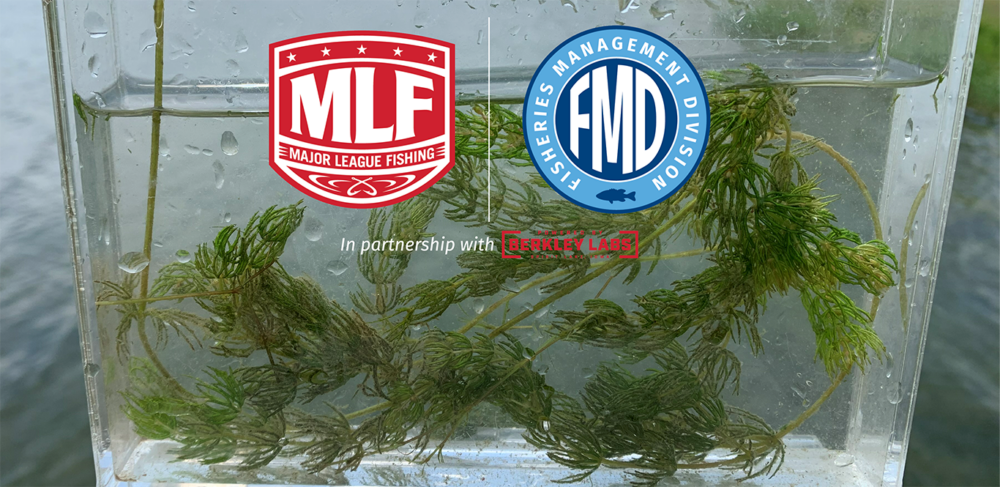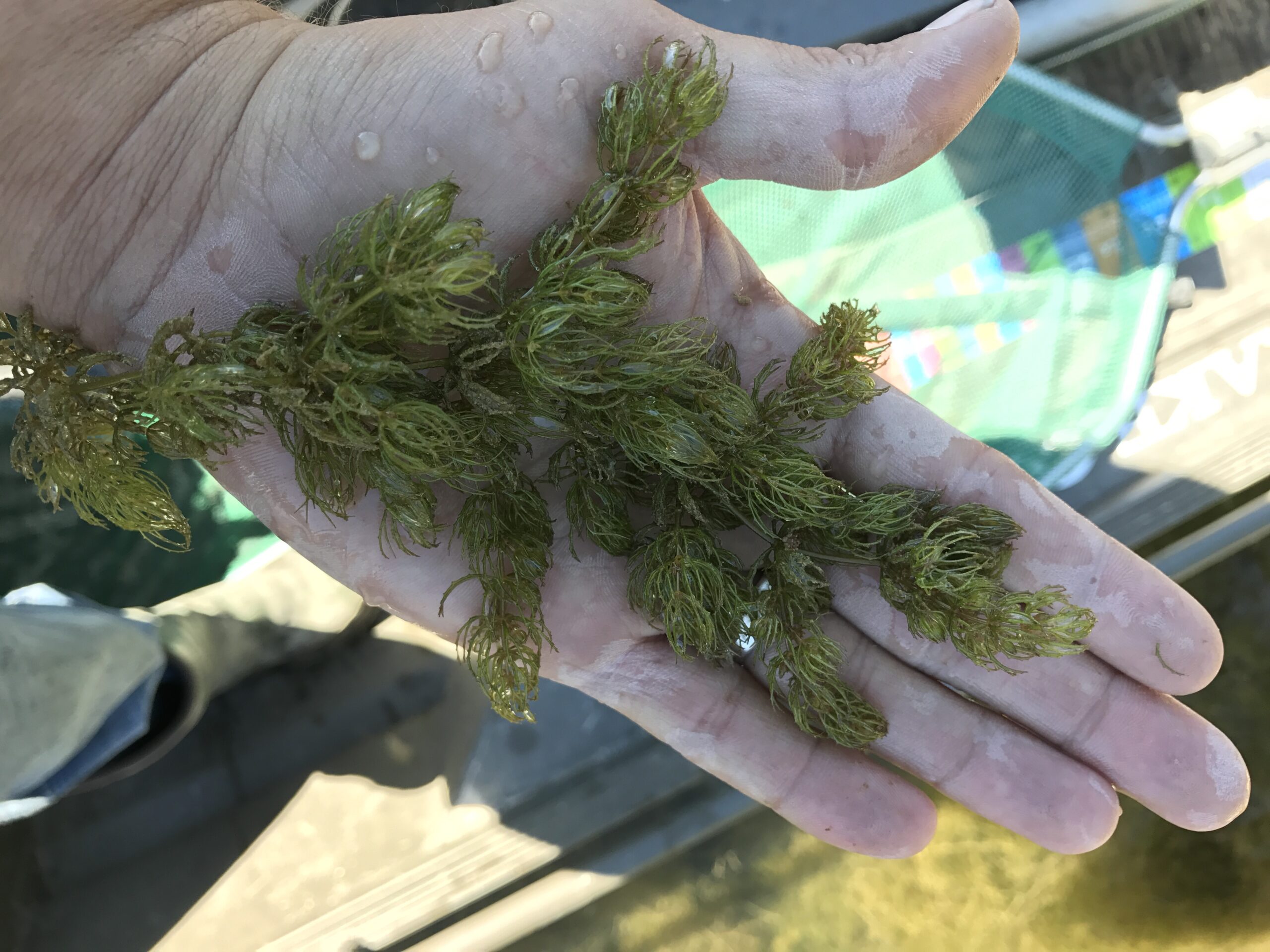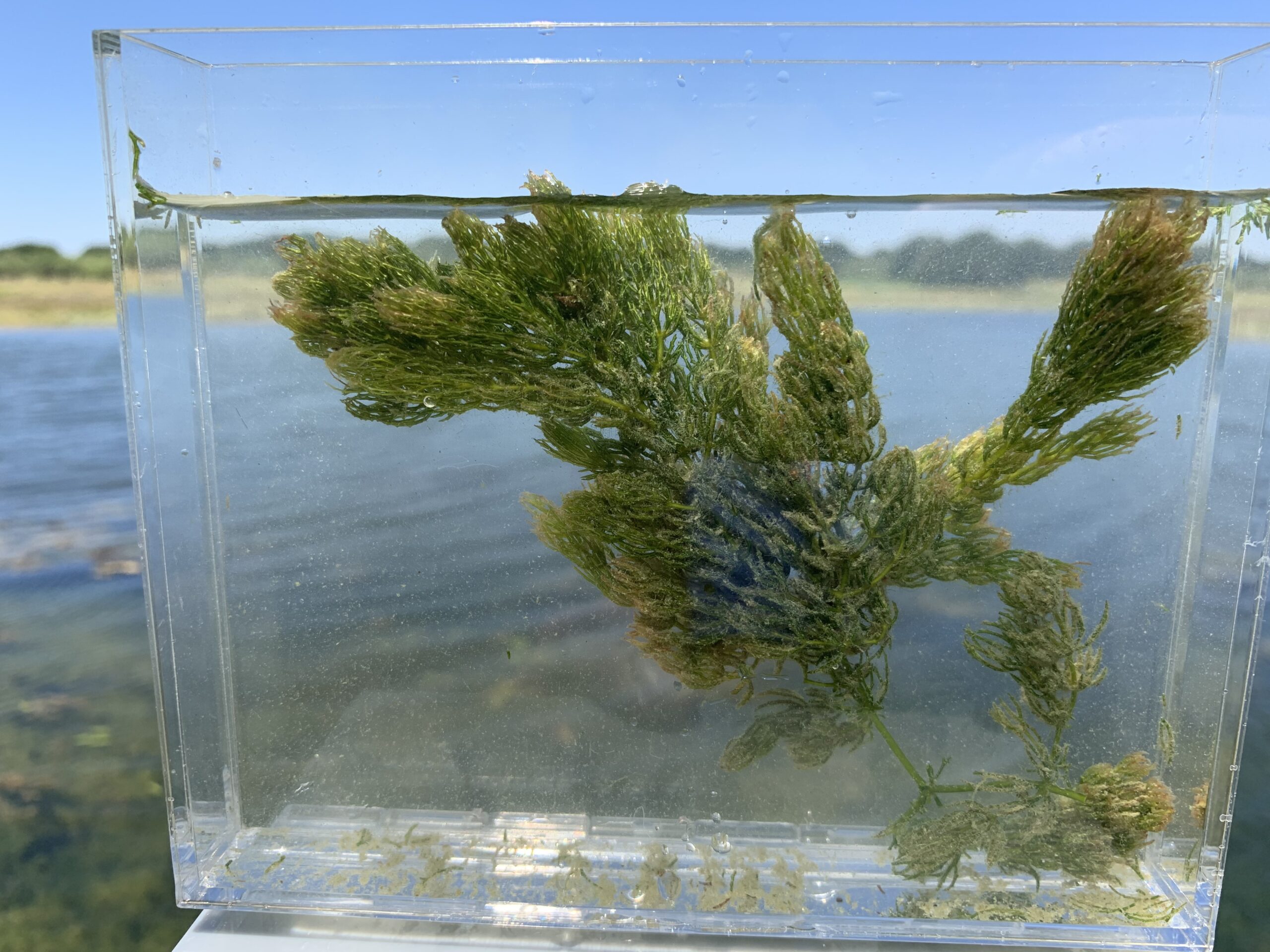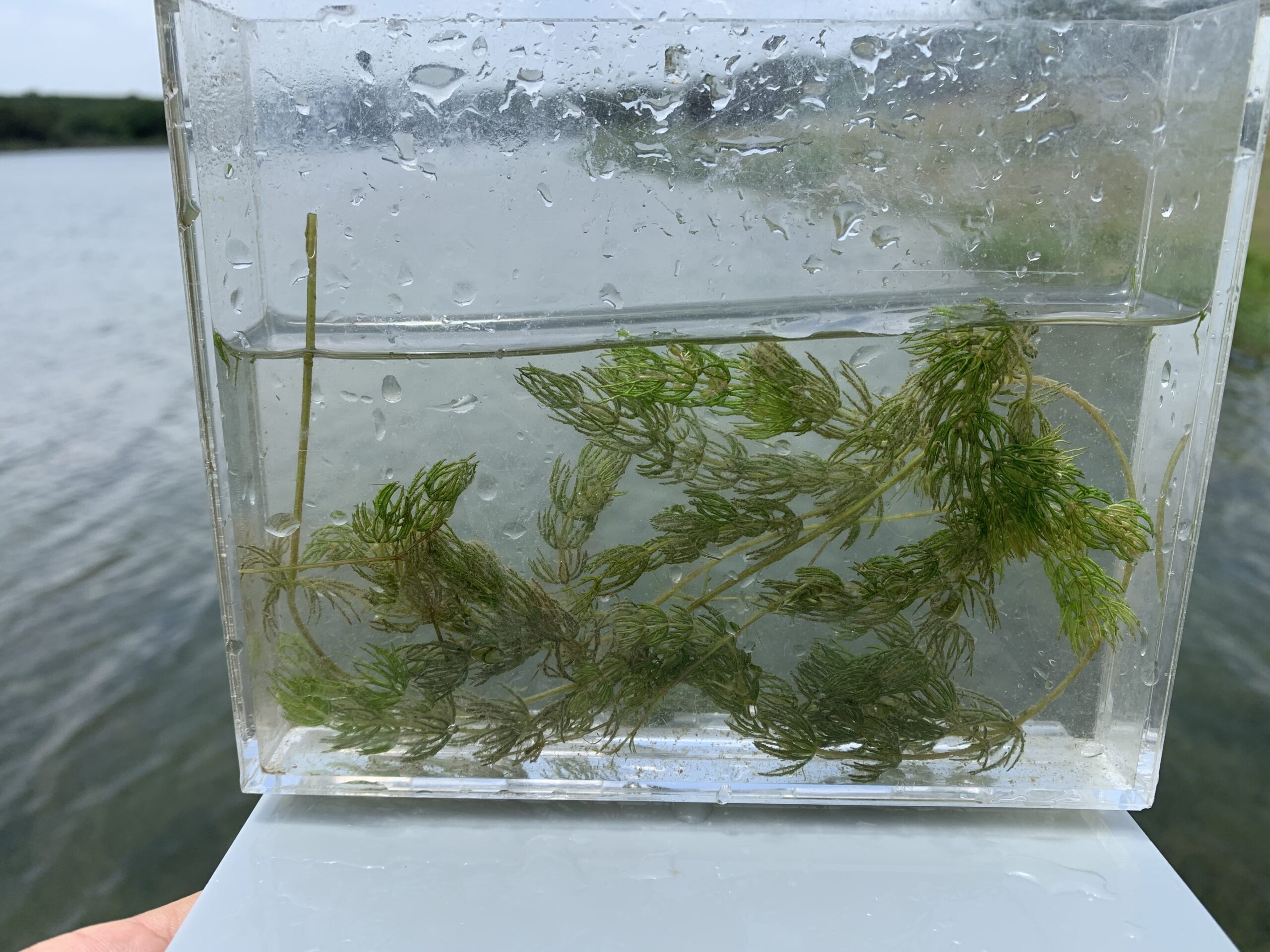MLF Anglers Guide to Aquatic Plants: Coontail

In the second edition of the MLF Anglers Guide to Aquatic Plants, we’re covering one of the most widely distributed submerged aquatic plants – Coontail or Ceratophyllum demersum. To help guide us on this plant, we have Bass Pro Tour anglers Cliff Crochet, Gary Klein, Ott Defoe, and Tackle Warehouse Pro Circuit anglers Alex Davis, Blake Smith, Grae Buck, James Niggemeyer, Jim Moynagh, Jim Tutt, Jimmy Washam and Trevor Fitzgerald.
Common Names
This plant goes by many names, including: Coontail, Coons-tail, or, in the aquarium world, Hornwart. All of our pros identified the plant and called it Coontail, although Crochet did say, “It’s certainly that green grass that’s not Hydrilla.”
Distribution
Coontail is one of the most common aquatic plants in the US and has worldwide distribution. There are three other lesser-known plants related to common Coontail. They are Spiny Hornwart Ceratophyllum echinatum (Eastern US), Prickly Hornwart Ceratophyllum muricatum (Florida, Georgia, and North Carolina) and Soft or Tropical Hornwart- Ceratophyllum submersum (Florida).
Identification

Coontail is a submerged aquatic plant, meaning it has a flaccid stem that cannot support the weight of the plant beyond the water column. It’s technically a rootless plant, although the first set of leaves will help to secure Coontail to the bottom substrate at times. The leaves are tubular-shaped with pointed ends. They grow in groups of eight to 12 leaves from one point. The terminal end of each stem will have a group of leaves that come to a rounded head that resembles the tail of a raccoon or cat. The spacing between the groups of leaves on a stem will start crowded together and increase in spacing with depth. Stems are multi-branching, creating a very dense plant mass. A red seed cluster can be found beginning in late summer.
Reproduction
Coontail has two common reproductive methods – seeding and regrowth from fragmentation. Seeds develop in clusters at the base of the stem near the leaves. Coontail seeds will be distributed by current or transported by wildlife. Fragmentation can occur when pieces of the Coontail plant break off the main plant mass. These smaller plant fragments can be transported by current and eventually begin growing into a new plant. This process can naturally occur before winter as the ends of mature Coontail break off and sink to the substrate to overwinter as turions.
Importance in a Fishery

Coontail is a fast-growing plant that will form dense vegetative cover in areas zero- to 20 feet deep. It’ll be used as a direct food source for many waterfowl, crawfish, and invertebrate species. As Coontail matures, especially in deeper water, it’ll form surface mats. These mats will have areas below them that are much less dense, creating open spaces with overhead shaded cover. At times these mats can break free, becoming freely floating and moving with current or wind.
As with all submerged aquatic plants, Coontail will produce oxygen that can contribute to the overall dissolved oxygen of the water. However, at night, aquatic plants consume oxygen. With greater density and warm summer nights, Coontail can cause localized fish kills.
MLF Anglers’ go-to Techniques
Alex Davis: “I use single-hook baits to reduce snagging its stems. Vibrating jigs or speed worms are the most efficient. I like Coontail in the spring as it doesn’t seem to die off as bad over winter. Also in the late fall it can be found deep and if shad are around, that combination can be special.”
Blake Smith: “Look for the healthiest mat you can find that’s green and not in super stagnant water. I use a SENKO, SENKO, SENKO. Texas-rigged with various sized weights depending on the time of year and Coontail density. I think the Texas-rigged Senko goes in and out without really getting hung in the stems. I will also throw a Yamamoto D Shad around it post-spawn when fry guarders are near.”
Cliff Crochet: “I keep it simple and I punch through the Coontail if it’s topped out and there’s an open mat below. Early season before it’s topped out, I use a Rat-L-Trap or Chatterbait and rip it out of the clumps.”
Gary Klein: “I use my underwater eyes (Lowrance) to find deep Coontail early in the season and target it with crankbaits, jerkbaits, spinnerbaits, bladed jigs, or swim jigs. Whatever can keep me in the target depth long enough for a hit. If I find it shallow, I’ll fish over it with a frog. Once it starts to canopy, I’ll flip the edges with a heavy weight.”
Grae Buck: “Early in the year or late in the winter you can find Coontail even when Milfoils or Hydrilla have died back. I target prespawn females ripping a Z-Man Jackhammer through the early-season growth. Once it grows into a mat, I look for areas that have points or slight depth changes. If I can find any area where Milfoil is starting to grow and intersect with the Coontail, that’s a high-percentage big-bass area for me.”

James Niggemeyer: “I’m a fan of Coontail in late summer into fall, before it tops out. I like to throw a frog over it and then once it creates a mat, I flip into it with jigs and soft plastics. I look for irregularities, depth changes, and isolated sections. There’s no ‘secret,’ just cover water and let the fish show you where they are.”
Jim Moynagh: “Coontail grows in a wide variety of conditions – hard bottom, soft bottom, deep water, shallow water, dense growth, sparse growth, clear water and stained water. Therefore, no individual technique will cover every situation. An angler has to read the situation and then pick a technique based on what is presented. For example, I’ve punched Coontail, jig-wormed Coontail, drop-shotted Coontail, cranked Coontail, Carolina-rigged Coontail and so on, all with success.”
Jim Tutt: “In early, early spring, Coontail will be some of the first growth and you can rip a lipless crankbait through it for big bites. Once other plants start to grow, I transition away from Coontail as it gets too dense.”
Jimmy Washam: “Coontail is always more productive in winter or early spring. If it’s in a protected area, it will stay green in cooler water temperatures. A Coontail flat may have one really unique section that holds the majority of fish, maybe it’s a point, depression, or clump on the edge. I prefer single-hook baits like a Chatterbait, swim jig, or Texas-rigged plastic.”
Ott Defoe: “When water temps are below 55 degrees and short springs or clumps are just starting, I rip a bladed jig or lipless crankbait through it or drop something straight down into it. Postspawn I’ll flip a jig or Texas rig into the taller clumps.”
Trevor Fitzgerald: “I throw a swim jig through it if it’s not topped out, but once it tops out I flip into it or use a popping frog to fish the edges. I really like Coontail postspawn, when baitfish attract bass trying to recover from the spawn. I look for clumps, not big mats, and try to find the areas that are mushroomed out with lots of shade. Those are the best to flip.”
Pros Favorite Fisheries for Coontail
Alex Davis: Lake Seminole in the fall
Blake Smith: Most Florida fisheries
Grae Buck: Lake Guntersville in February and March
Gary Klein: “It’s one of my preferred aquatic grasses across the country.”
James Niggemeyer: Potomac River in August
Jim Moynagh: “Like all plants in northern lakes, Coontail dies back under the ice. Once the ice goes out in spring, normally it trails other plants in growth and isn’t thick enough to hold numbers of bass until mid-season. But once Coontail beds reach maturity, they can be bass magnets, holding fish all the way to ice-up. In fact, Coontail will often be the healthiest, greenest plant remaining late into the fall, which helps to draw life and bass. I’ve had many excellent catches, including tournament wins, fishing Coontail in the North.”
Jimmy Washam: The Tennessee River fisheries like Guntersville or fisheries with Coontail in colder months.
Ott Defoe: “Toledo Bend Reservoir flipping a jig in an area with Milfoil and Coontail mixed. The Coontail was taller, but in a small area the size of a boat. I caught the biggest fish there all three days.”
Trevor Fitzgerald: Lake Toho in May
If you want to see where others have found Coontail near you, join our project page on iNaturalist here.